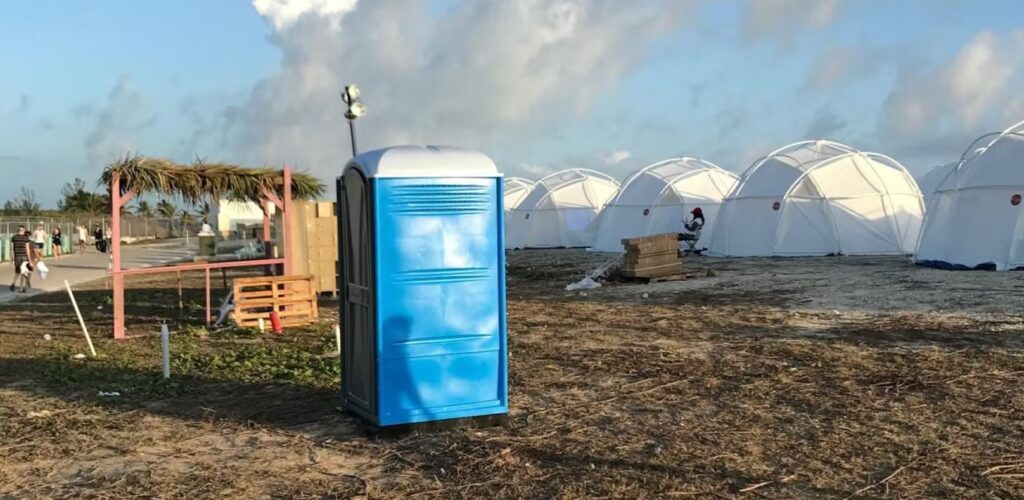The PR Mirage: What Fyre Festival Revealed About Message Discipline
In April 2017, hundreds of influencers, festival-goers and aspirational travelers arrived on a remote island in the Bahamas expecting luxury. They had seen the models. They had watched the cinematic trailer. They had liked the posts, shared the content and bought into what was promised to be a once-in-a-lifetime music experience. What they found instead were rain-soaked FEMA tents, soggy cheese sandwiches and chaos.

Fyre Festival wasn’t just a failure. It was a manufactured illusion, an elaborate PR mirage that collapsed the moment reality intruded.
The Illusion Takes Shape
The idea was ambitious. Entrepreneurs Billy McFarland and rapper Ja Rule set out to promote a new booking app for live entertainment by staging an exclusive music festival on a private island. They secured major influencer partnerships, filmed a lavish promotional video featuring supermodels on yachts, and saturated Instagram with orange tiles that sparked curiosity and buzz. Within 48 hours, tickets were selling for thousands of dollars.
But while the marketing engine ran at full speed, the logistics remained broken. The location was unsuitable. Artists dropped out. Infrastructure was non-existent. And the timeline, just a few months from launch to event, was catastrophically unrealistic. Internally, teams raised concerns, but the outward messaging didn’t flinch. The illusion had to hold.
This is where the real lesson begins.
When PR Leads Without Truth
Fyre Festival became a case study not because it failed, but because it succeeded. At first. It generated hype, secured coverage, attracted talent and built anticipation. The promotional campaign has been widely analyzed in marketing circles, including discussions in university-level communications and brand strategy courses. But none of it was backed by operational truth.
Public relations, at its best, builds trust between a brand and its audience. But when PR becomes untethered from reality, when the message is managed without regard for the facts, it turns from a discipline into a disguise.
In the lead-up to the festival, internal coordination broke down entirely. Vendors weren’t paid. Staff quit. Guest services teams were instructed to withhold details from attendees. Communications became reactive, defensive and fragmented. No one was aligning statements across touchpoints, because no one could.
Compare that to how high-functioning comms teams operate during real uncertainty. A well-prepared team doesn’t just react to incoming questions. They build a record of what has been said, how narratives are shifting and where misalignment could create risk. They anticipate confusion and manage it in advance. They keep a record of truth, not just the story being told.
Platforms like Broadsight help create that kind of discipline. Not as a shield for chaos, but as a check against it. When every statement, journalist inquiry and leadership message is logged and visible, it becomes harder to maintain a false narrative and easier to correct course before damage spreads.
The Collapse
By the time guests arrived on the island, the messaging no longer matched the environment. They were promised villas and got disaster tents. They were promised gourmet food and received wet slices of cheese on white bread. And the press, which had once been an ally, quickly turned. Coverage shifted from anticipation to outrage in hours.
Within a day, the images from the festival went viral. Screenshots of the food, the housing and the disorganization flooded social media. News outlets began stitching together the timeline. In the absence of any official communication plan, attendees became the storytellers, and the story they told was damning.
Fyre didn’t fall apart because of one lie. It collapsed because the gap between message and reality grew too wide to cover. And without a coordinated, transparent communications structure, there was no way to regain control.
Rebuilding Trust Is Harder Than Protecting It
In the years since, documentaries, lawsuits and apologies have followed. But the damage was permanent. Fyre became shorthand for over-promised and under-delivered. It reminded every comms team of the same core truth: Message discipline only works when it is rooted in reality.
Public relations is not the art of making things look good. It is the practice of making things clear, consistent and grounded. When teams have the structure to monitor what’s being said and where confusion is forming, they don’t just avoid disaster. They build credibility.
Not every organization will face a crisis on the scale of Fyre. But every organization is vulnerable when the message becomes separated from the facts. The further they drift apart, the harder they are to reconcile. And by the time the world notices, it is already too late to fix the story in real time.
The lesson of Fyre is a reminder that strong messaging cannot compensate for silence, misalignment or wishful thinking.
Especially when the tents are already in the mud.
To learn how Broadsight can keep all your messaging aligned with reality, visit broadsight.ca.
Receive our newsletter
Sign up below and we’ll be in touch with monthly updates about Broadsight, along with news and insights to keep you on the cutting edge of communications work in an AI era.

